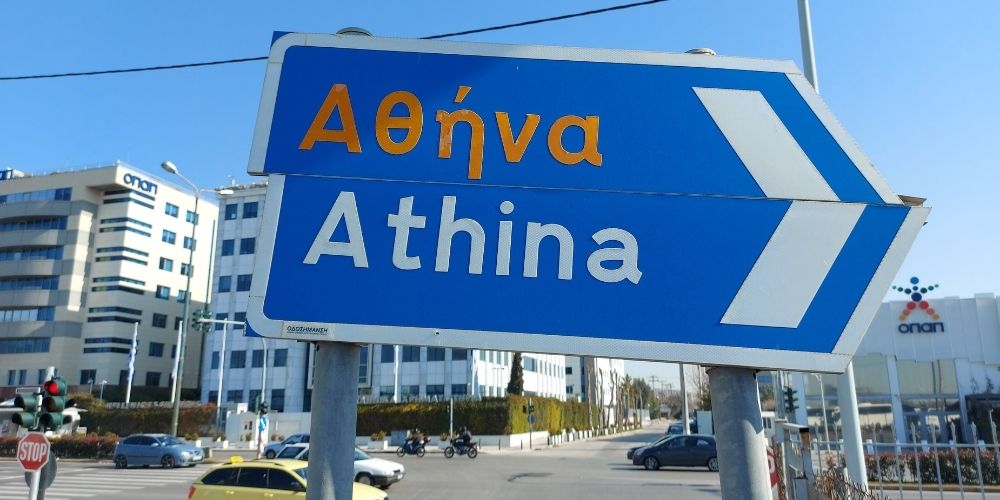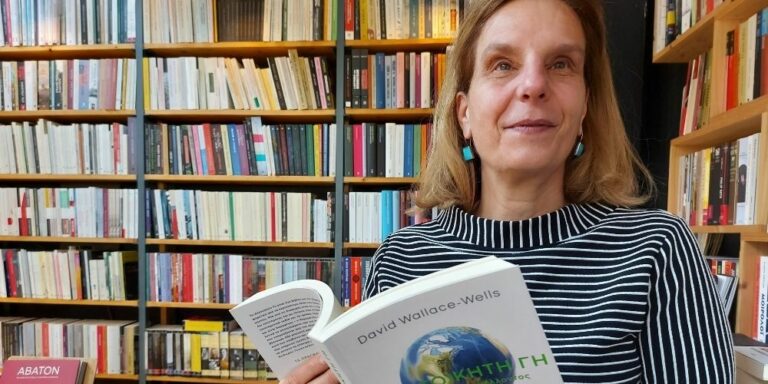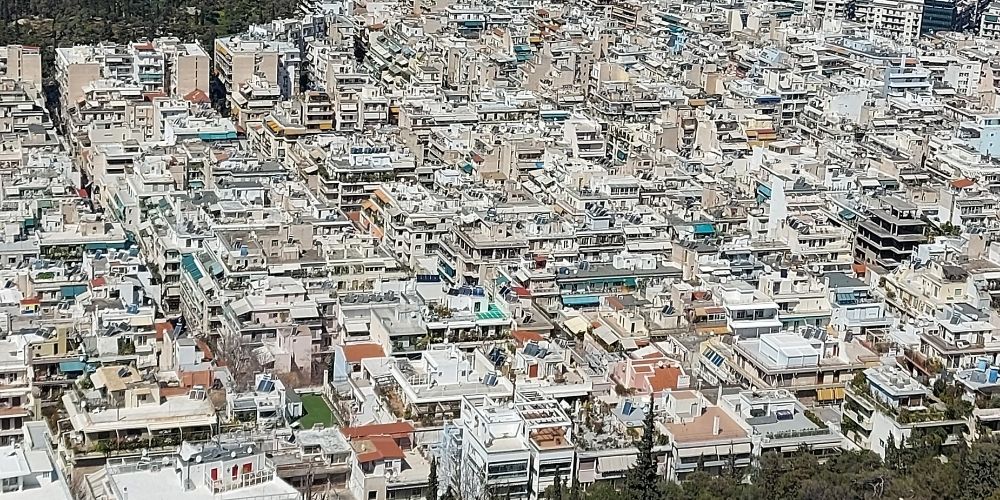
The average temperature in Europe will continue to rise this century. By 2050, temperatures may be as much as 2.5 degrees C higher than today. The biggest temperature increase during the 21st century will hit southern Europe in the summer. It’s time for Europe, and the whole world for that matter, to take serious measures against excessive heat, especially in metropolitan areas. This is the opinion of Eleni Myrivili, who was appointed Chief Heat Officer of Athens in the summer of 2021. She is the first and only person in Europe to hold such a position.
The appointment did not come out of the blue. Myrivili served as deputy mayor of Athens and alderwoman for urban nature and climate resilience between 2014 and 1019. In 2015, she was also the city’s Chief Resilience Officer. We spoke with Myrivili in the shadow of the Acropolis.

How did Athens come up with the idea of a CHO
“It was an immediate response by the mayor of Athens to the fact that last July, Miami-Dade County first created this job. Miami had received a grant for it from the American Adrienne Arsht-Rockefeller Foundation Resilience. This is a foundation that has the goal of reaching one billion people with solutions to the climate crisis by 2030. This makes me the second CHO in the world.”
You did show up at the right time!
“I was only in office for a couple of days when Athens was hit by a heatwave of unprecedented porportions. So appointing me was a good idea. There was an immediate need for communication about the heatwave and the impacts of heat. I don’t think many other people in the council could have handled this subject matter.”
The key question: what does a CHO do?
“The CHO needs to ensure that the huge problem of heat does not remain under the radar, as it is now. Discussions and courses of action on climate revolve around problems such as floods and wildfires, but almost never about heat. As if heat isn’t also part of the problem.”
Do you have decision-making authority?
“Since I am no longer a city council member, I have no decision-making or executive authority. I am an advisor. My aim, however, is to bring this position into municipal government. That would also be my plea to other municipalities thinking about appointing a CHO: make sure the position is anchored in the municipal government. That will make the position much more effective.”
How should the heat problem be dealt with?
The first thing we need to do is raise awareness of the problem. We are launching a pilot this summer that involves analyzing data so that we can categorize heatwaves. We are taking meteorological data, such as temperature, humidity and wind, from the past 30 years and linking it to mortality statistics. By doing this, we want to see what the effect of extreme heat is on mortality rates. We do not take the recorded cause of death as a given, because it is seldom that a doctor will cite ‘heat’ as the cause of death on the death certificate. Instead, the death is more likely to be attributed to a stroke or heart attack. As a result, there is systematic underreporting. This is why we are establishing the correlation between excess mortality and heat.”
“This pilot analysis is not something we are only doing in Athens. A number of cities affiliated with the network of 100 resilient cities are also participating. This is a network of around 100 metropolises and major cities around the world whose goal is to address the climate problem on an urban level.”
What can you do with that data?
“The data should lead to the creation of three risk categories, high, medium and lower health risk types. This will ensure that during a heat wave, but also shortly before one, we will be able to respond more effectively to its effects. Within the network of resilient cities, we are already using the Extrema Globa app, where the user can check the heat risk in one of ‘our’ cities and find out where the cooler spots in a city are.”
Are residents aware what the dangers of heat are?
“As CHO, it is also my job to ensure that the population is ready. Establishing risk categories makes it easier to organize help during a heat wave. Still, it’s slow going. For example, when it is extremely hot, the municipality of Athens keeps municipal areas that have been cooled open longer, so that older people, for example, have a safe haven. Nevertheless, very few people tend to go these places.”

“We are working on other measures, such as home help for people in need of assistance in the event of extreme heat. There are plenty of such measures to consider. What Sydney is doing is great. When a certain heat level is reached, all energy suppliers are required by law to channel their energy to the cities to avoid blackouts there due to the mass use of air conditioners.”
But given the climate problem, are air conditioners really the solution?
“No, definitely not! It’s better not to use them, and certainly not at those low temperatures. That’s why it’s important not only to prevent heat like that, but to bring the temperature down outdoors. This can be done through modifications in urban design. The basis is to bring greenery into the city and bring water back up to the surface. It’s really not rocket science. The cooling capacity of trees, for example, is tremendous. Through evapotranspiration, evaporation via the leaves, trees can bring the temperature down and also create shade.”
How is Athens faring?
“With my appointment, Athens is sending a clear message: we need to proactively focus our efforts on the heat problem. Athens is one of the most densely populated cities in Europe and, moreover, it is not a wealthy city. Yet we want to do everything we can to address the problem.”
“A far-reaching project is underway to harness the water from an ancient, underground Roman aqueduct so as to green the city. The structure is basically still in operation and drains approximately 800,000 cubic meters of underground water to the sea every year over a distance of 20 kilometers. Nothing else is being done with it. The plan therefore envisages creating green belts in the areas where the water is flowing. As CHO, I am endeavoring to keep the ‘heat’ factor high on the agenda within this project.”
Support us!
Innovation Origins is an independent news platform that has an unconventional revenue model. We are sponsored by companies that support our mission: to spread the story of innovation. Read more.
At Innovation Origins, you can always read our articles for free. We want to keep it that way. Have you enjoyed our articles so much that you want support our mission? Then use the button below:







